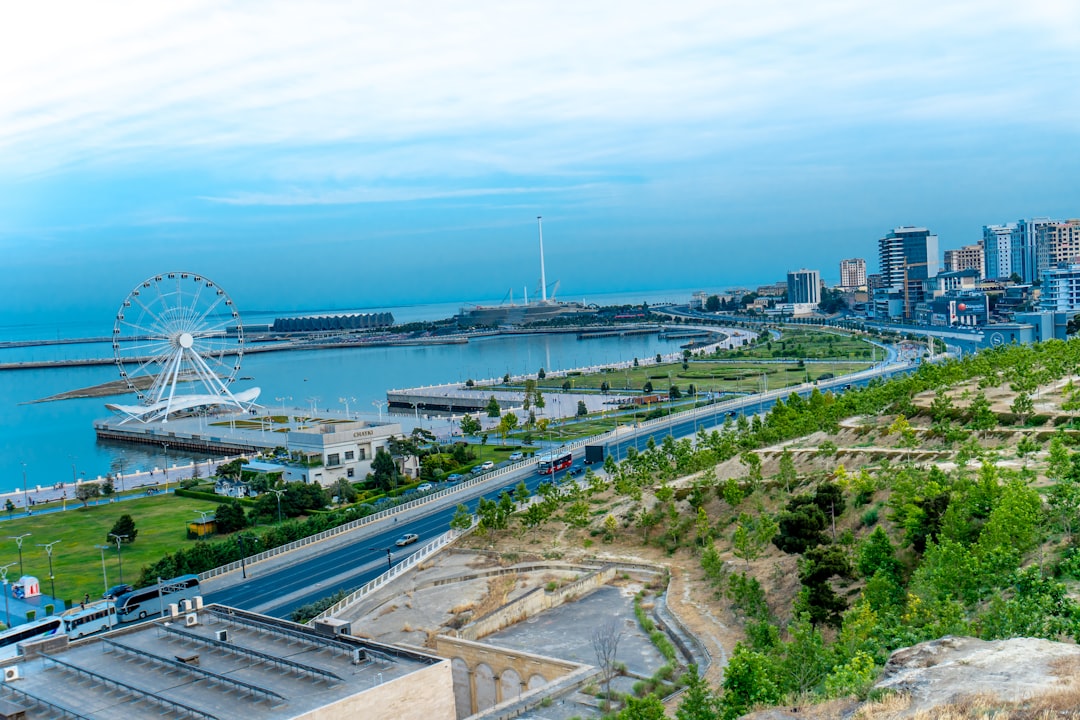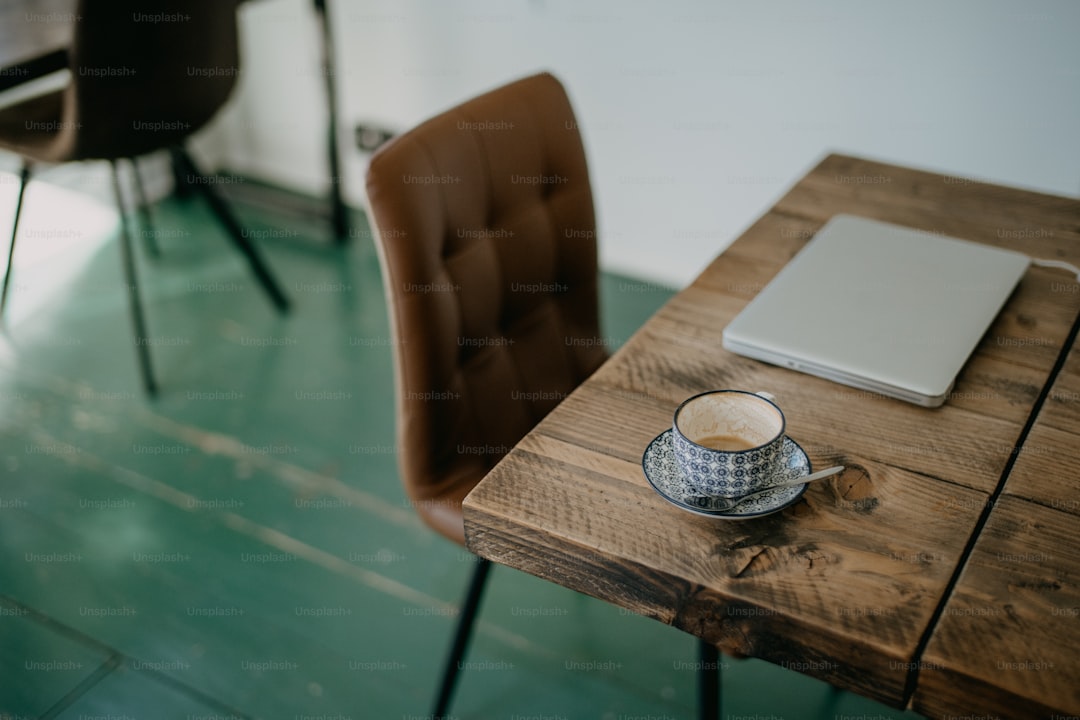Sustainable Travel Hacks for Light Living

Introduction
Living the digital nomad life is a blend of freedom, curiosity and constant movement. The allure of waking up in a new city, logging in from a seaside café, and swapping stories with fellow travelers is powerful. Yet the same mobility can generate a hidden environmental toll: frequent flights, disposable gear, and a wardrobe that expands faster than a suitcase can hold.
Sustainable travel hacks for light living are about reconciling the desire to explore with the responsibility to protect the planet. They focus on reducing waste, conserving resources, and simplifying the things you carry so that every journey becomes lighter – both physically and ecologically. This guide pulls together practical tips, mindset shifts, and community ideas that help you travel with less, waste less, and still enjoy the richness of the nomadic lifestyle.
Why Sustainable Travel Matters
The carbon cost of mobility
Air travel accounts for a significant share of global carbon emissions. Even short regional hops add up when you consider the frequency of a nomad’s trips. By choosing slower, lower‑impact transportation where possible, you directly cut your personal carbon footprint.
Resource consumption of gear
The market for travel gear thrives on trends: ultra‑light backpacks, disposable toiletries, fast‑fashion shirts. Most of these items are manufactured with energy‑intensive processes, shipped across continents, and often discarded after a few uses. Minimalism encourages you to keep only what truly adds value, which in turn reduces the demand for new products and the waste they become.
Community ripple effect
When you model sustainable habits, you inspire fellow nomads. The digital nomad community is highly networked; a single practice can spread through forums, co‑working spaces, and Instagram stories. Collective action amplifies the impact of each individual choice.
Core Principles of Light Living
- Intentional Packing – Every item should serve a clear purpose or bring measurable joy.
- Multi‑functionality – Choose gear that can perform several roles.
- Durability Over Trendiness – Invest in items that last years, not seasons.
- Zero‑Waste Mindset – Treat waste as a resource to be eliminated or repurposed.
- Local Integration – Align your travel habits with the culture and environment of each destination.
These principles act as a filter for all decisions, from the backpack you buy to the way you plan a route.
Packing Strategies
Start with a capsule list
Create a master list of essentials that never changes: laptop, charger, passport, reusable water bottle, and a few core clothing items. Keep this list visible on your phone or a small notebook. When you add something new, ask if it truly replaces an existing item or if it’s redundant.
The “one‑in‑one‑out” rule
Every time you acquire a new piece of gear, remove one you no longer need. This maintains a steady weight and prevents the suitcase from becoming a storage unit for forgotten items.
Use compression wisely
Compression sacks can shrink bulky items like jackets, but over‑compressing can damage fabrics and reduce insulation. Reserve compression for items you won’t need immediately, such as a spare down jacket stored in a day‑pack.
Pack by activity, not by day
Organize gear into activity zones – work, outdoor, social – rather than trying to allocate specific outfits for each day. This reduces the temptation to over‑pack “just in case” clothing.
The 10‑item challenge
For a week‑long trip, try limiting yourself to ten personal items (excluding electronics and travel documents). This forced minimalism reveals what you truly rely on and pushes you to seek multi‑purpose solutions.
Gear Choices
Backpacks
- Opt for a 30‑40 L volume pack with a sturdy frame and padded hip belt.
- Look for recycled polyester or recycled nylon fabrics.
- Ensure the pack has a detachable day‑pack; it eliminates the need for an extra bag.
Laptops & Tablets
- A lightweight ultrabook (under 1 kg) reduces load and energy consumption.
- Use cloud storage to avoid carrying external hard drives.
Travel Clothing
- Choose merino wool for its odor resistance, temperature regulation, and biodegradability.
- Select a single pair of versatile trousers that can be dressed up or down.
- Pack a packable rain jacket made from recycled materials.
Toiletries
- Replace disposable shampoo bottles with solid shampoo bars.
- Use a reusable silicone travel bottle set (500 ml total) for liquids.
- Carry a small bamboo toothbrush and a refillable floss container.
Kitchen Essentials
- A collapsible silicone bowl, a lightweight metal spoon, and a travel mug cover most cooking needs in hostels or shared kitchens.
- A compact spice kit (salt, pepper, a pinch of dried herbs) can elevate simple meals without adding bulk.
Power & Connectivity
- Carry a solar charger with at least 10,000 mAh capacity for off‑grid days.
- Use a universal travel adapter with USB‑C ports to avoid multiple chargers.
Clothing Hacks
Layering over bulk
Instead of a heavy coat, bring a base layer (merino tee), a mid layer (fleece or lightweight down), and a waterproof shell. This system adapts to temperature swings while keeping each piece lightweight.
Neutral color palette
Choose earth tones or grayscale that mix and match easily. This reduces the total number of shirts and pants needed.
Quick‑dry fabrics
Synthetic blends and wool dry faster than cotton, allowing you to wash items in a sink and wear them the next day without lingering dampness.
“One‑wear” techniques
- Reverse rolling – roll shirts inside out so the outer side faces outward; it hides minor stains.
- Air‑dry on the go – hang shirts on a travel hanger attached to a hook on your backpack strap; airflow reduces drying time.
Repair kit
Pack a small sewing kit (needle, a few thread colors, a couple of spare buttons). Fixing a small tear extends the life of a garment and prevents waste.
Food & Drink Sustainability
Reusable containers
A collapsible silicone food bag and a stainless‑steel lunchbox replace single‑use plastic zip‑locks. They are lightweight, fold flat, and keep leftovers safe.
Local markets
Buying fresh produce from local stalls supports the economy and reduces the carbon footprint of imported goods. It also offers an authentic culinary experience.
Minimal waste cooking
- One‑pot meals – Use a single pot for rice, beans, and vegetables; less dishwashing.
- Bulk spices – Carry a small refillable spice jar instead of multiple packets.
Water sourcing
- Filter bottle – A lightweight water filter (e.g., Sawyer Mini) eliminates the need for bottled water.
- Refill stations – Many cities have public water refill stations; locate them ahead of time via apps.
Coffee habit
Invest in a portable coffee press or a collapsible French press. It allows you to brew locally sourced beans instead of buying disposable cups.
Transportation Choices
Prioritize ground travel
When distances allow, choose trains, buses, or shared rides. These modes often emit less CO₂ per passenger and provide a chance to see the landscape.
Carbon offsetting
If flying is unavoidable, purchase verified carbon offsets for the exact distance and class of travel. This compensates for emissions through projects like reforestation or renewable energy.
Micro‑mobility
Rent a bike, electric scooter, or use city bike‑share programs for short trips. They cut down on taxi rides and reduce local traffic congestion.
Group travel
Coordinate with fellow nomads to share rides. Splitting a rental car or van spreads the emissions across more passengers, making each person’s impact smaller.
Walk whenever possible
Walking is the ultimate zero‑emission mode. Plan routes that allow you to explore on foot; it also improves health and immersion in the surroundings.
Accommodation Practices
Eco‑friendly hostels
Look for certifications such as Green Key or EarthCheck. These hostels implement energy‑saving measures, recycling programs, and often provide refillable toiletries.
Short‑term rentals with sustainability
Choose apartments that include recycling bins, energy‑efficient appliances, and encourage guests to reuse linens and towels.
House‑sitting and exchange
Participate in house‑sitting platforms or home‑exchange networks. You get free accommodation while caring for a property, reducing the demand for hotel rooms.
Minimalist stay habits
- Turn off lights and AC when leaving the room.
- Reuse towels and sheets for multiple days to lower water and energy use.
- Bring your own reusable toiletries to avoid single‑use hotel plastics.
Digital Tools for Light Living
Packing apps
Apps like PackPoint let you create customized packing lists based on destination, length of stay, and planned activities. They help avoid over‑packing.
Expense trackers
Using a simple spreadsheet or an app like TravelSpend helps you monitor how much you spend on disposable items versus reusable alternatives, reinforcing sustainable habits.
Community platforms
Join nomad forums, Facebook groups, or Discord servers focused on minimalism and sustainability. Sharing tips and resources reduces the need to reinvent solutions.
Offline maps
Download offline maps (e.g., Maps.me) to navigate without using cellular data, saving battery and reducing reliance on constantly online services.
Community Building
Skill‑swap circles
Organize or join meet‑ups where travelers exchange skills – a photographer teaches basic editing in exchange for a cooking lesson using local ingredients. This fosters collaboration over consumption.
Shared resources
Create a “nomad library” in co‑working spaces where members can borrow books, chargers, or tools instead of each person buying their own.
Group challenges
Host a “Zero‑Waste Week” challenge within your community. Participants track their waste and share results, motivating each other to improve.
Mentorship for newcomers
Guide new nomads on how to pack light and travel sustainably. The mentorship cycle ensures knowledge passes on and the community stays aligned with eco‑friendly values.
Routine Maintenance
Daily audit
Spend five minutes each evening reviewing what you used that day. Did you waste a disposable item? Could you replace it with a reusable alternative tomorrow?
Weekly gear check
Inspect backpacks, shoes, and clothing for wear. Repair minor issues before they become major problems that force replacement.
Declutter travel bag
Before each trip, empty your bag, clean it, and only repack the essentials. This habit prevents hidden items from accumulating unnoticed.
Sustainable laundry
- Wash clothes in cold water to save energy.
- Use biodegradable detergent.
- Hang dry whenever possible; line drying also reduces humidity in indoor spaces.
Mindset Shifts
From ownership to experience
Shift focus from accumulating gear to collecting experiences. The memory of a sunrise on a mountain is richer than the cost of an extra pair of hiking boots.
Embrace “good enough”
Perfectionism leads to over‑packing. Accept that a simple, functional item can serve well enough for most situations.
See waste as a signal
When you notice a disposable cup or a single‑use plastic bag, treat it as a reminder to improve your habits rather than an unavoidable fact of travel.
Celebrate small wins
Every reusable water bottle filled, every mile walked instead of driven, every piece of clothing repaired – these are victories that add up.
Quick Reference Checklist
- Backpack: 30‑40 L, recycled fabric, detachable day‑pack.
- Clothing: 2 merino tops, 1 lightweight fleece, 1 packable rain shell, 1 pair of versatile trousers, 2 pairs of underwear, 2 pairs of socks.
- Footwear: 1 pair of sturdy walking shoes, 1 pair of lightweight sandals.
- Tech: Ultrabook, solar charger, universal adapter, headphones.
- Toiletries: Solid shampoo bar, reusable silicone bottles, bamboo toothbrush, refillable floss.
- Food gear: Collapsible bowl, metal spoon, stainless lunchbox, small spice kit.
- Water: Filter bottle, refillable water bottle.
- Repair kit: Needle, thread, spare buttons, small multitool.
- Sustainability habits: Walk or bike for short trips, use public transport, offset flights, reuse linens, choose eco‑hostels, share resources.
Carry this list on your phone or print a tiny card to keep in your day‑pack. It acts as a daily reminder of your light‑living commitments.
Conclusion
Sustainable travel hacks for light living are not about sacrificing the thrill of the nomadic life; they are about deepening the connection between you, the places you visit, and the global community you belong to. By packing intentionally, choosing multi‑functional gear, embracing zero‑waste habits, and fostering a supportive network of like‑minded travelers, you reduce your ecological footprint while enhancing the quality of each adventure.
The journey toward lighter, greener nomadism is incremental. Each small decision – swapping a plastic straw for a metal one, taking a train instead of a short flight, repairing a torn seam – compounds into a meaningful impact. As you adopt these practices, you will notice not only a lighter backpack but also a lighter mind, freed from the burden of excess.
Travel is a privilege, and with the right mindset and tools, it can also be a force for good. Let the hacks in this guide become part of your daily rhythm, and watch how your travels evolve into a sustainable, purposeful, and truly liberating way of life.
Random Posts

Balancing Work and Exploration Productivity Hacks for Nomads
Learn how nomads can turn wanderlust into productivity by adopting a mission first mindset, simple routines, and smart hacks that let work and adventure coexist without guilt or burnout.
2 months ago

Financial Freedom Guide for the Worldly Freelancer
Discover a practical roadmap for nomadic freelancers to achieve financial freedom, from building resilient income and choosing smart banking tools to mastering cross-border taxes and legal safeguards while you travel the world.
4 days ago

Thriving on the Move Mental Wellness for Digital Nomads
Discover how digital nomads can turn constant travel into mental strength with practical habits, mindset shifts, and community tools that keep stress, anxiety, and loneliness at bay.
2 months ago

Connecting Wanderers Through Global Nomad Community Events
Global nomad events turn solo travel into a shared adventure, linking remote workers through fast-internet coffee talks, collaborative brainstorming, and lasting friendships that boost careers and personal growth.
2 months ago

Secrets of High Performing Digital Nomads
Discover the hidden playbook of top digital nomads, how disciplined freedom, a growth oriented identity, and proven systems turn remote life into high performance. Follow concrete steps to thrive wherever you work.
2 months ago
Latest Posts

Essential Software Every Remote Professional Should Use
Master remote work with essential tools: instant messaging like Slack, high definition video calls such as Zoom, and asynchronous voice apps. Streamline communication, stay connected and boost productivity.
1 day ago

Mastering Remote Work Productivity for Digital Nomads and Freelancers
Learn proven habits, tools, and tactics that help digital nomads and freelancers stay focused, deliver quality work, and maintain a sustainable lifestyle while traveling the world.
1 day ago

Tech‑Friendly European Towns Perfect for Remote Living
Discover Europe’s best small towns where fast internet, affordable living and vibrant tech communities let you work remotely while soaking up historic charm, lakeside views or mountain air.
1 day ago